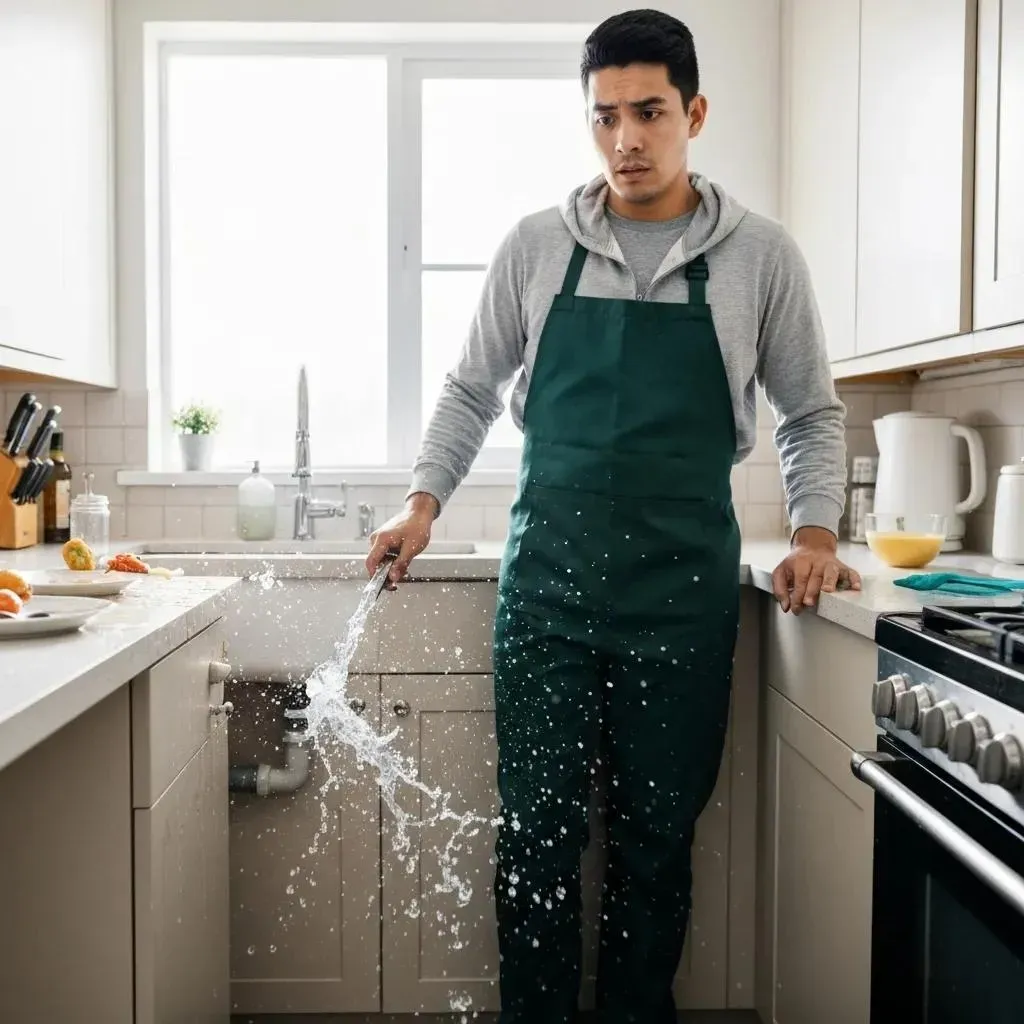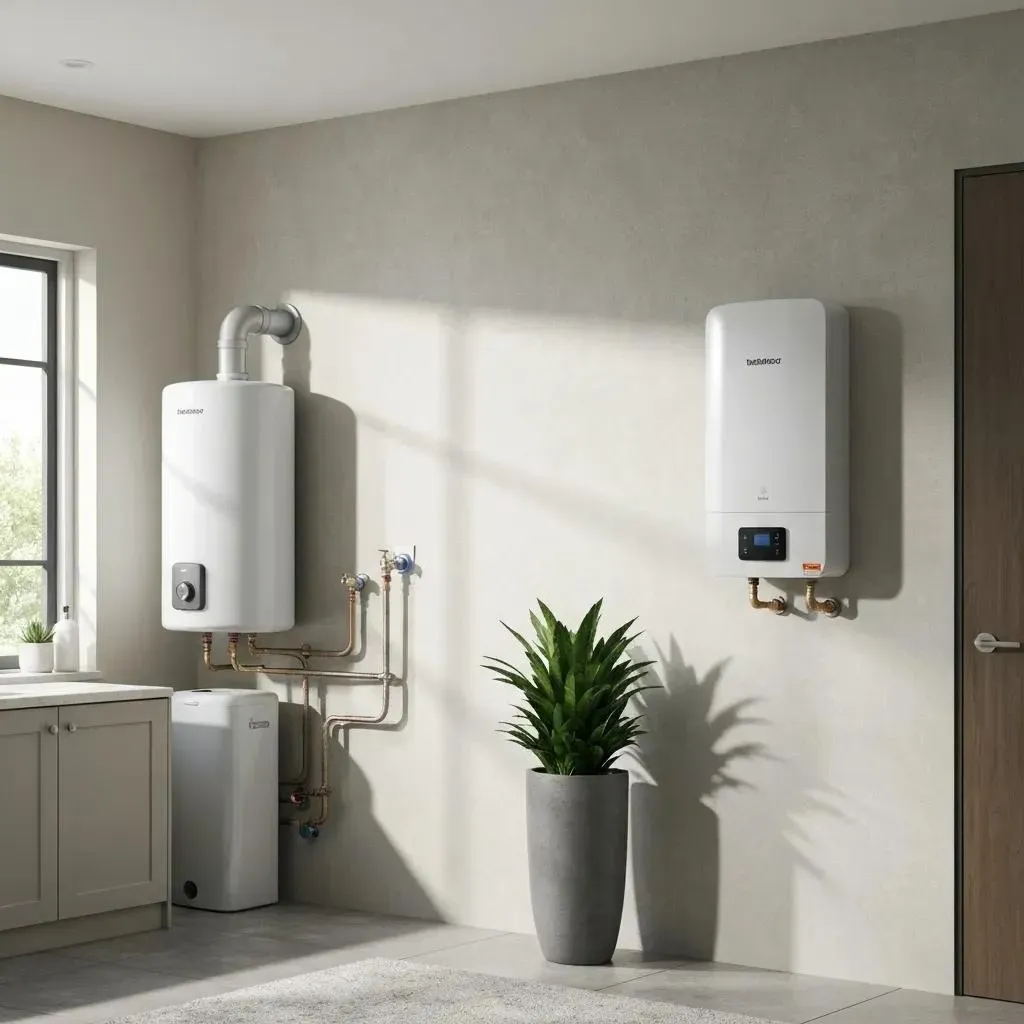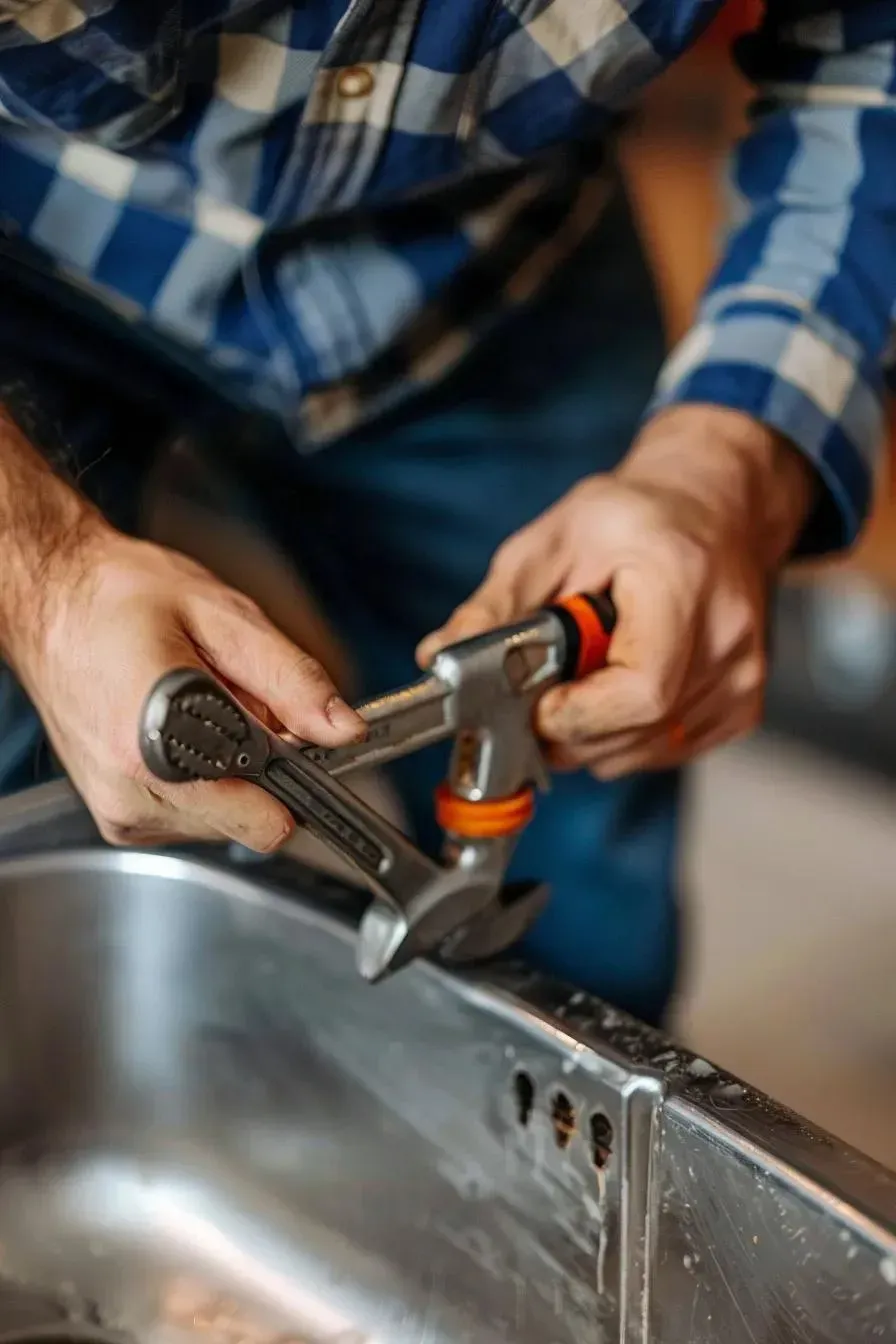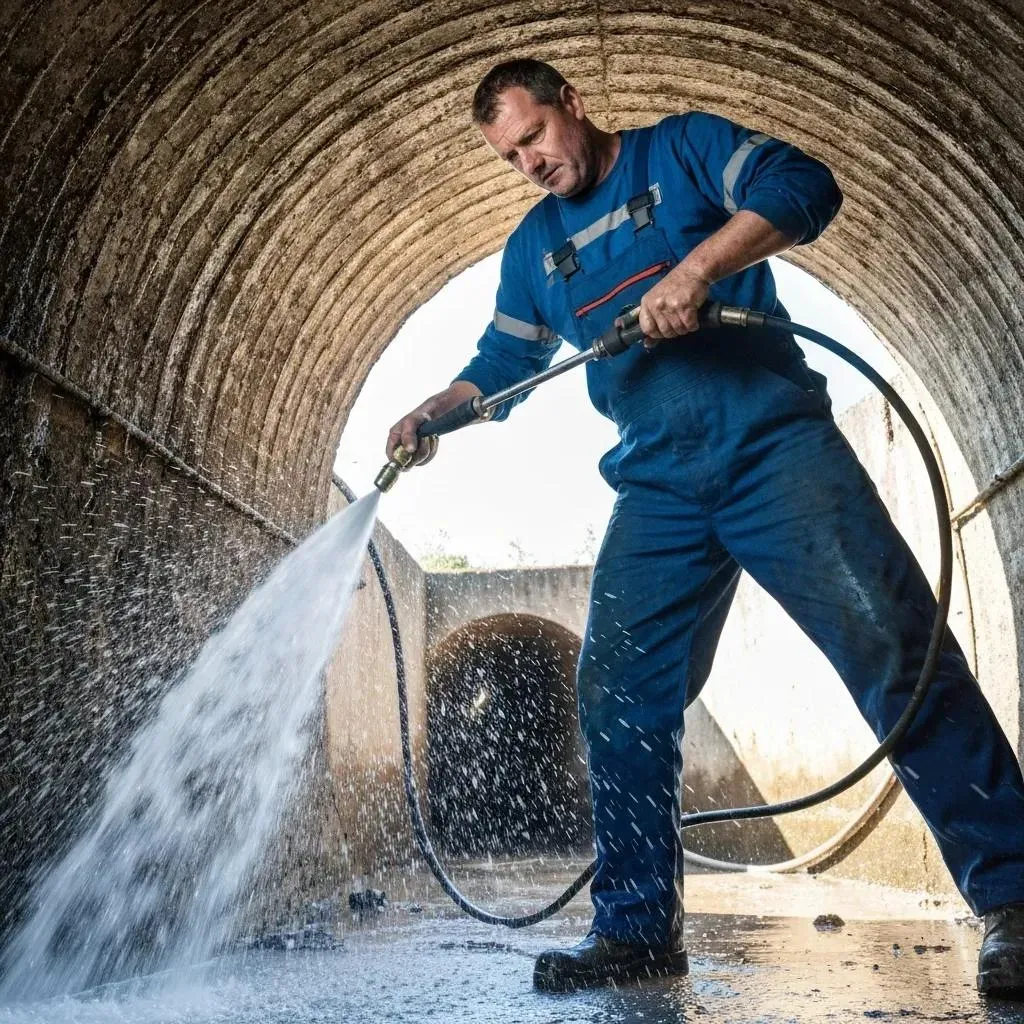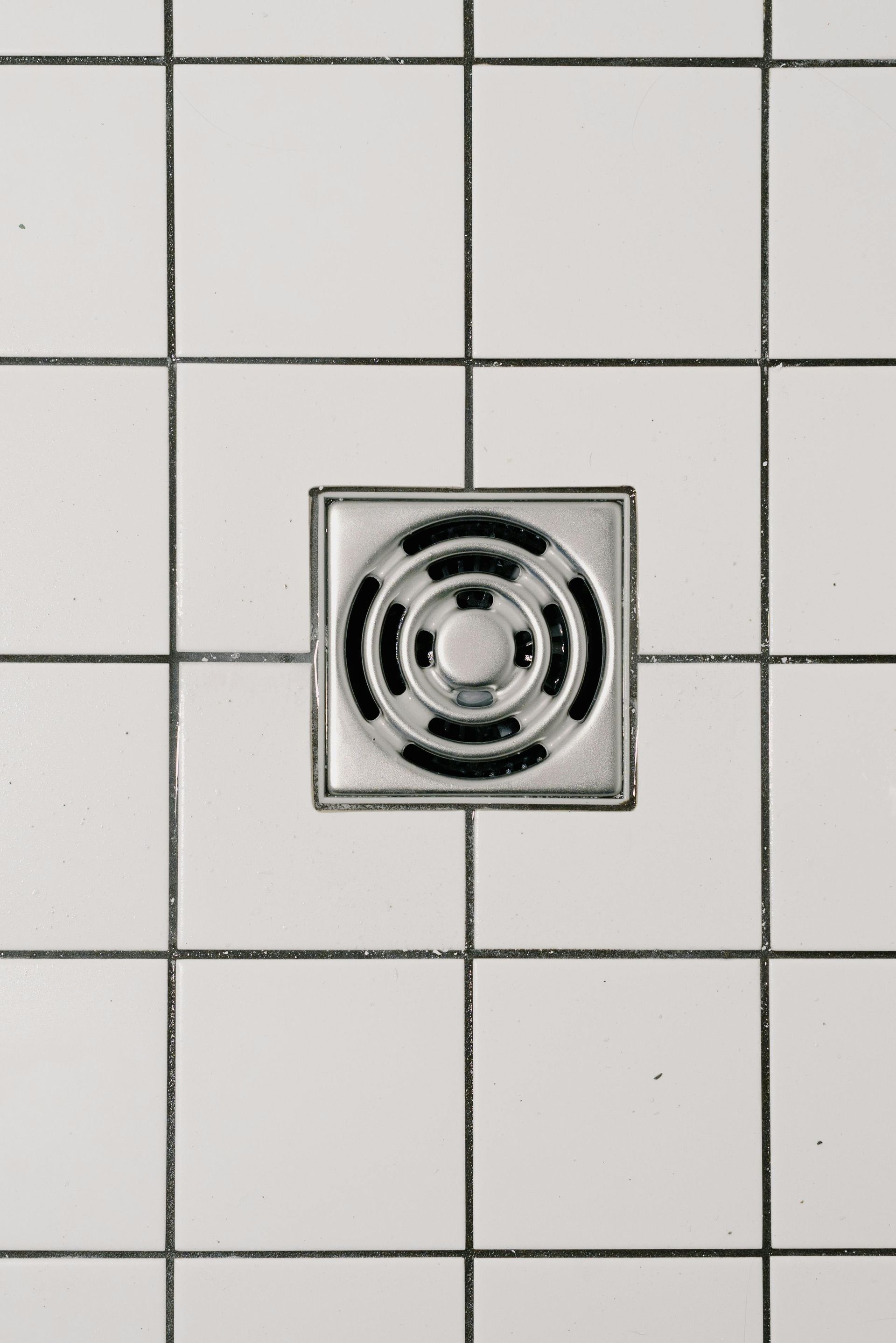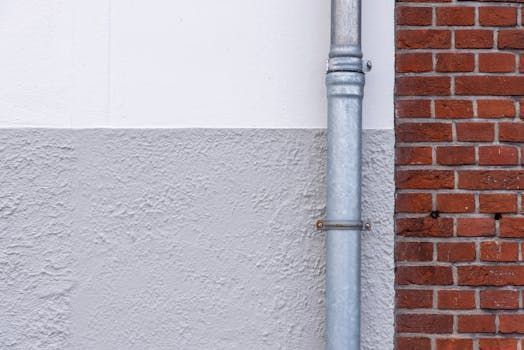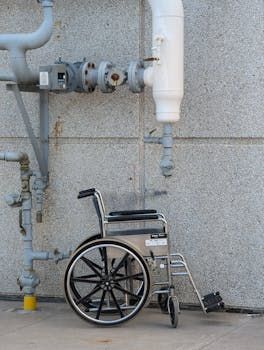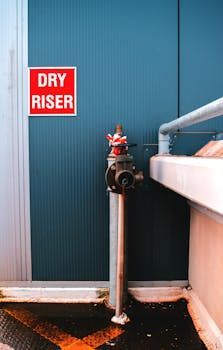Fix Low Water Pressure or Low Flow: Expert Denver Plumbers
Low Water Pressure vs. Low Flow: Pinpointing the Problem and Finding Expert Denver Plumbing Solutions
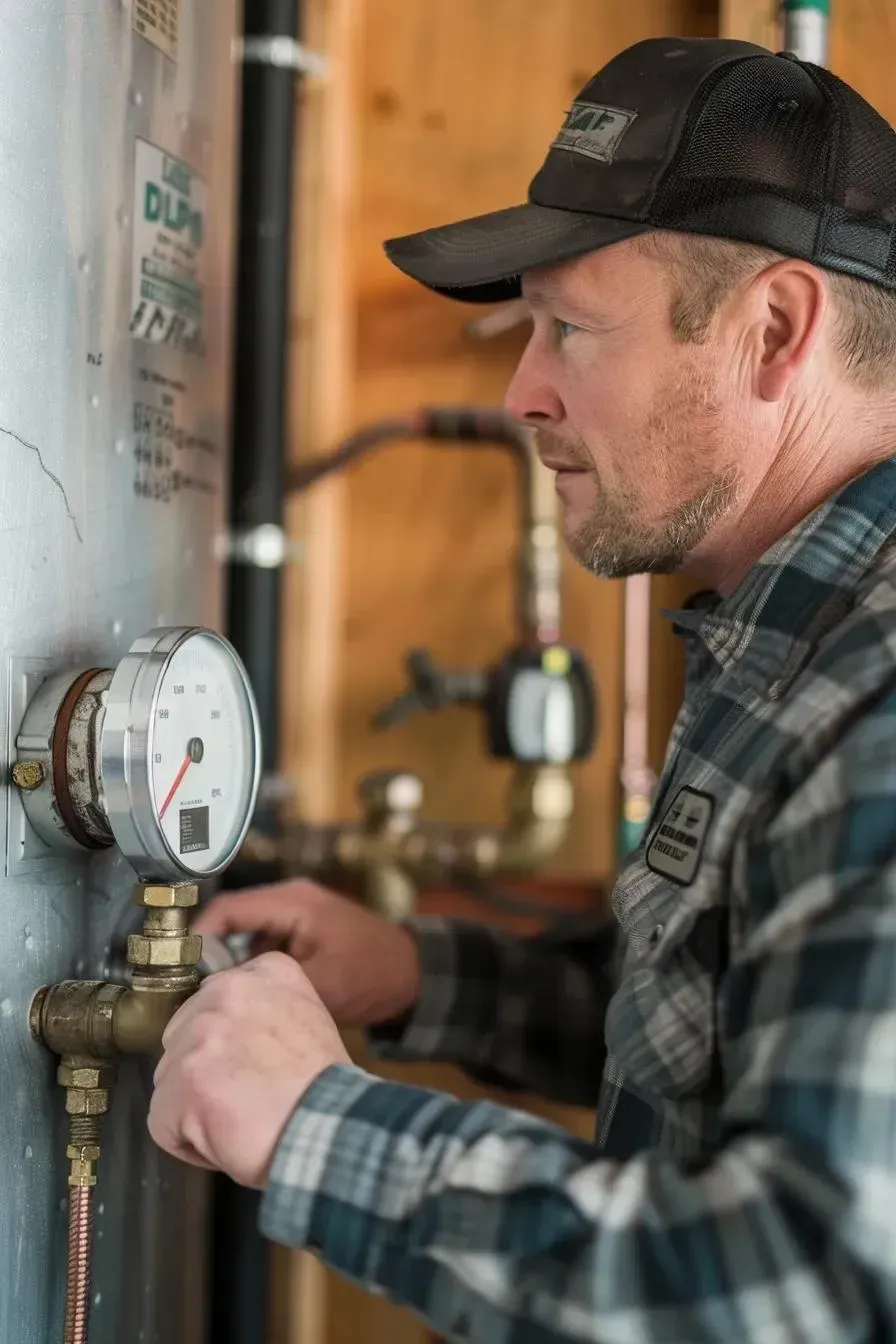
Low water pressure and low flow might sound like the same thing, but they’re actually quite different. Pressure is about the force pushing water through your pipes, while flow is about the volume of water that comes out. Each issue needs a specific fix. This guide will break down what pressure (PSI) and flow (GPM) really mean, how to easily check for problems, what usually causes them, simple DIY tests, professional fixes, and how to keep your water system running smoothly. Whether you just need to clean a faucet aerator or are facing a bigger main line issue, understanding the difference is key to getting the right solution. For dependable service and clear pricing in Denver, check out Accountable Home Services for 24/7 Plumbing and book your appointment today.
What Are Water Pressure and Water Flow? Getting the Basics Down
Water pressure and flow are the backbone of your home’s plumbing. They affect how well your faucets and showers work, how efficiently your appliances run, and your overall comfort. Understanding these basics is the first step to figuring out what’s wrong and how to fix it.
What Exactly Is Water Pressure, and Why Does It Matter?
Water pressure is the force that pushes water through your pipes, measured in pounds per square inch (PSI). When you have good pressure, you get a strong, steady stream from your faucets and showerheads. If the pressure is too low, everyday tasks like washing dishes or filling a bathtub can become a slow, frustrating experience. The right PSI also helps prevent damage to your pipes and keeps your appliances working their best.
What Is Water Flow, and How Do We Measure It?
Water flow tells us how much water is moving through a pipe over a certain amount of time, usually measured in gallons per minute (GPM). This rate determines how quickly your fixtures fill up and how many appliances you can use at once without noticing a dip in performance. Good flow means you can run multiple showers or the washing machine without issues, while low flow can slow things down and create bottlenecks in your water system.
How Do Water Pressure and Flow Impact Your Plumbing System?
Pressure and flow work hand-in-hand to deliver the water you need, with enough force and in sufficient volume. Low pressure can starve fixtures that require a lot of water, and restricted flow can make it seem like you have low pressure even when you don’t. The table below shows how they differ:
| What We're Looking At | Water Pressure (PSI) | Water Flow (GPM) |
|---|---|---|
| What It Is | The force pushing water | The amount of water per minute |
| How We Measure It | Using a pressure gauge | Timing how long it takes to fill a container |
| How It Affects Fixtures | How strong the stream is | How fast things fill up and if you can use multiple at once |
| Common Signs | Weak spray, sputtering water | Slow filling, issues at just one faucet |
Understanding how these two elements interact will help you find the right fix to get your home’s water supply working perfectly again.
What’s Causing Low Water Pressure in Your Home? Common Culprits
To figure out why your water pressure is low, you need to look for where the resistance or loss of force is happening. Here are the most common reasons your PSI might be dropping:
Common Reasons for Low Water Pressure
Low water pressure can happen for a number of reasons, like pipes that are clogged, pipes that have corroded over time, or a pressure regulator that’s not working right. These issues can block water from flowing freely, leading to less pressure at your faucets and showers.
How Does a Bad Water Pressure Regulator Cause Low Pressure?
A water pressure regulator is designed to control the high pressure coming from the city’s water supply, protecting your home’s plumbing from damage. If the spring or diaphragm inside it wears out, the pressure going to your fixtures can drop too low. You might notice inconsistent pressure readings or that the flow changes a lot between different faucets.
What a Water Pressure Regulator Does
A water pressure regulator is a key part of your plumbing system. It’s installed on the main water line to lower the high pressure from the city to a safe level for your home, usually between 40 and 60 PSI. Without it, too much pressure could harm your pipes and fixtures.
Can Corroded Pipes or Leaks Lead to Low Water Pressure?
As pipes get older, rust, mineral buildup, and tiny pinhole leaks can form inside them. This narrows the space for water to flow and can even cause water to escape before it reaches your fixtures. Corroded pipes force water through tighter passages, reducing its force. If you see discolored water or damp spots under sinks, it could be a sign of corrosion or hidden leaks that are lowering your water pressure.
How Do City Water Supply Issues and the Main Shut-Off Valve Affect Pressure?
Sometimes, the problem isn’t inside your home. If the city is doing maintenance on the water mains or if there are fluctuations in the supply, you might notice a drop in pressure. Also, if your main shut-off valve isn’t fully open, it can restrict the amount of water coming into your house. Make sure the valve is all the way open, and ask your neighbors if they’re experiencing similar issues to see if the problem is with the city supply.
What Role Does a Well Pump Play in Water Pressure Problems?
If your home gets its water from a well, a pump and pressure tank are responsible for delivering consistent water pressure. If the pump motor is failing, the pressure switch is worn out, or the tank’s bladder has a leak, it can lead to low pressure. If your pump is turning on and off very frequently, or if your faucets are running completely dry, it’s likely a problem with the well pump system.
How to Spot the Signs of Low Water Pressure vs. Low Flow
Knowing the difference between low pressure and low flow symptoms will help you figure out the root cause faster, saving you time and money.
What Are the Signs of Low Water Pressure in Faucets and Showers?
When water pressure is low, you’ll notice a weak or sputtering stream from your faucets and showerheads. It might be hard to get a steady spray pattern, and you’ll likely see the pressure drop significantly if you try to use more than one fixture at a time. If your shower barely trickles or it takes ages to fill a glass with water, you’re probably dealing with a pressure issue.
How Can You Recognize Low Water Flow at Specific Fixtures?
Low water flow means you have normal pressure, but not much water is coming out. This often happens at fixtures that are farther from the main water line or those with built-in restrictors, like low-flow aerators. If only one faucet or appliance is slow to fill, it’s likely a flow restriction, possibly due to a clog or a partially closed valve.
When Is Low Pressure or Low Flow a Plumbing Emergency?
If you suddenly lose water pressure and see visible leaks, water pooling around your home, or dampness in the basement, you need to call a plumber immediately. Rapid draining in toilets, your well pump running constantly, or a complete loss of water flow are also urgent signs that require professional attention to prevent serious water damage and system failure.
How to Test and Diagnose Low Water Pressure and Low Flow Yourself
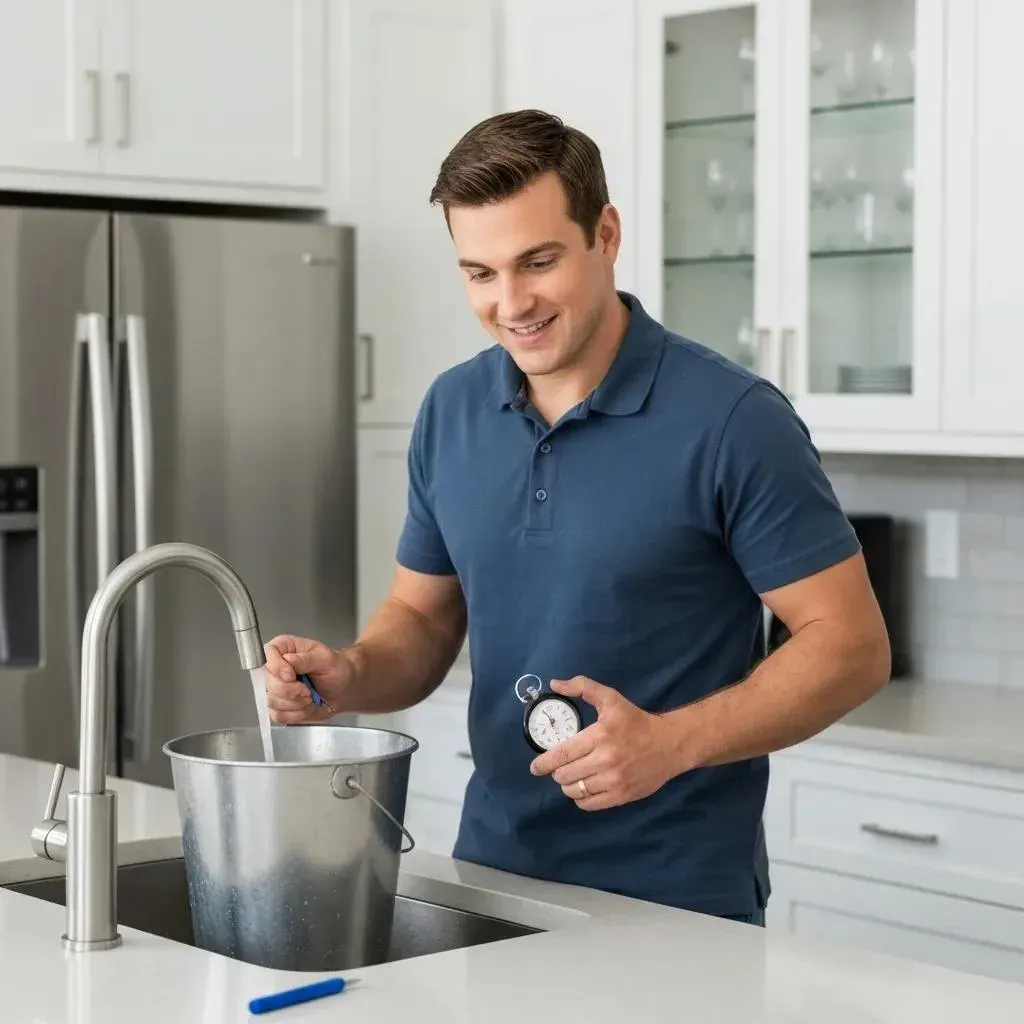
Before you pick up the phone to call a plumber, there are a few simple tests you can do at home to confirm whether you’re dealing with a pressure problem, a flow issue, or a bit of both.
What Tools and Methods Help Test Water Pressure at Home?
You can use a hose-end pressure gauge to check the PSI at an outdoor spigot. Try testing at different times of the day and see what your neighbors are getting to understand if the city supply is consistent. A healthy home plumbing system should typically read between 40 and 60 PSI.
How Do You Measure Water Flow Rate and Check for Flow Restrictions?
Take off the aerator from a faucet or the showerhead. Place a one-gallon bucket under the spout and time how long it takes to fill completely. Divide the number of gallons by the number of minutes to get your GPM. If your fixture’s flow is lower than its rated GPM, the aerator or showerhead might be clogged, or there could be a blockage in the pipe leading to it.
Measuring Water Flow Rate
Water flow rate is usually measured in gallons per minute (GPM). A simple way to measure it is with a bucket test: time how long it takes to fill a container of a known size. This helps you figure out how much water is actually moving through your pipes over time.
What Simple DIY Fixes Can Improve Water Flow or Pressure?
- Clean or replace any aerators or showerheads that are clogged with sediment.
- Make sure that any angle stops under sinks and the main shut-off valve for your house are fully open.
- If you have a pressure regulator, you can try adjusting the screw to slightly increase the downstream PSI.
These basic steps can often get your water system working better and help you decide if it’s time to call in the pros.
What Professional Solutions Fix Low Water Pressure and Low Flow Issues?
When problems are more complex or widespread, it’s best to bring in licensed plumbers who have the right tools and expertise.
How Do Plumbers Repair or Replace Water Pressure Regulators?
Our technicians will carefully remove the old regulator, check for any worn-out parts, replace seals or the entire unit if needed, and then adjust the spring tension to the correct PSI. Installing it correctly ensures consistent pressure and prevents future issues.
When Is Main Water Line Repair or Replacement Necessary?
If your main water line is heavily corroded, has frequent leaks, or is made of old galvanized piping that’s decades old, it might need to be fully or partially replaced. Methods like trenchless pipe lining or installing new copper or PEX pipes can fix pressure loss caused by buildup and ensure your water line is reliable for years to come.
Main Water Line Repair Methods
When repairing a main water line, plumbers might replace just the damaged sections or use trenchless methods that cause less disruption to your property. The best approach depends on the specific problem, the type of pipe, and your budget.
What Are Effective Solutions for Clogged Pipes and Aerators?
For clogs deep within your pipes, high-pressure hydro jetting can blast away scale and debris. We can also use special chemicals to dissolve mineral buildup. For issues at the fixture level, we can clean or replace aerator screens and filters to ensure water flows freely again.
How Can Booster Pumps Improve Low Water Pressure?
A booster pump system adds extra force to your water supply, potentially increasing your home’s PSI by up to 40 points. These systems often include pressure tanks and controls, making them ideal for larger homes or situations where the city’s water pressure is consistently low, ensuring you have enough water for multiple fixtures at once.
When Should You Call a Plumber for Low Water Pressure or Low Flow Problems?
Getting a professional opinion can uncover hidden problems, ensure repairs are done safely, and prevent issues from coming back.
What Are the Benefits of Professional Plumbing Inspection and Diagnostics?
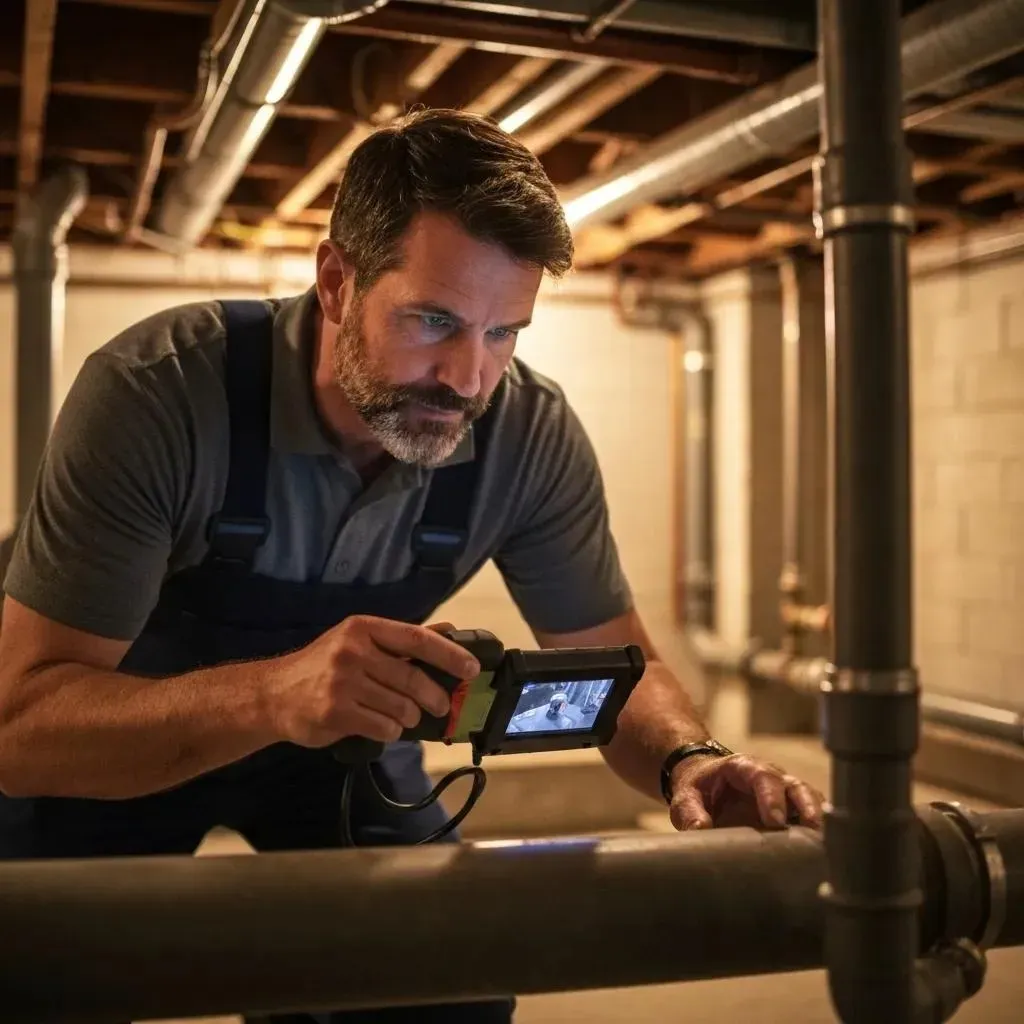
Benefits of Professional Plumbing Inspections
Having your plumbing professionally inspected offers many advantages, such as finding leaks early, improving water flow and pressure, and preventing unexpected emergencies. Inspections can also help identify potential issues before they become major problems.
Our licensed plumbers use advanced tools like camera inspections to find blockages, infrared leak detection to locate hidden leaks, and precise gauges to map out pressure zones. This detailed approach means no guesswork, only targeted solutions, and you’ll often receive upfront cost estimates.
How Does Accountable Home Plumbing Provide 24/7 Emergency Repair Services in Denver?
Accountable Home Plumbing is ready around the clock with prompt dispatch, clear upfront pricing, and skilled technicians equipped with mobile diagnostic tools. Whether it’s a frozen pipe or a sudden loss of pressure, we provide fast, dependable service throughout the Denver Metro area.
What Are the Risks of Ignoring Low Water Pressure or Flow Issues?
If you ignore low water pressure, it can damage your appliances, lead to more scale buildup, and hide serious leaks. Persistent low flow can cause sediment to settle in pipes, potentially leading to bacterial growth in stagnant water and reducing the effectiveness of fire sprinkler systems.
What Are the Best Practices for Preventing Low Water Pressure and Low Flow?
Regular maintenance is key to keeping your water system running at its best and making your plumbing components last longer.
How Often Should You Schedule Plumbing System Check-Ups?
We recommend annual inspections to catch early signs of corrosion, pressure regulator issues, or pump wear. If your home uses a well system or is in an older neighborhood, consider having inspections twice a year to ensure your main lines and pressure tanks are in good shape.
What Maintenance Tips Keep Water Pressure and Flow Optimal?
- Periodically flush sediment from pressure tanks and water heaters to clear out mineral deposits.
- Clean your faucet aerators and showerheads every three months.
- Regularly open and close your angle-stop and main shut-off valves to prevent them from seizing up.
Taking these steps helps maintain full pipe diameter and consistent water force, reducing the chances of unexpected service calls.
How Do Water Conservation Fixtures Affect Flow and Pressure?
Low-flow showerheads and aerators are designed to use less water by limiting GPM. While they save water, they can sometimes feel like they’re causing low pressure. If you notice a significant drop in performance, consider upgrading to pressure-compensating fixtures that maintain good force while still conserving water.
Frequently Asked Questions About Low Water Pressure and Low Flow
Here are quick answers to common questions, helping you understand the differences and how to troubleshoot without all the technical jargon.
What Is the Main Difference Between Low Water Pressure and Low Flow?
Low water pressure means the force of the water is weak (like a weak stream), while low flow means there isn’t much water volume (like a slow fill). Pressure is about PSI, and flow is about GPM.
How Can I Tell If My Water Pressure Regulator Is Failing?
If you see inconsistent or consistently low PSI readings at multiple faucets, hear banging pipes when you turn on the water, or notice the pressure gauge fluctuating wildly, your regulator might be worn out or out of adjustment.
Can a Clogged Pipe Cause Low Water Pressure or Low Flow?
Clogs definitely restrict water flow volume and can create backpressure that feels like low pressure. While pipe blockages primarily reduce GPM, they can also decrease the force of the water coming out.
Is Low Water Pressure a Sign of a Serious Plumbing Problem?
Yes, persistent low PSI can point to bigger issues like leaks in the main water line, severely corroded pipes, or failing components in a well pump system. These problems tend to get worse over time and can lead to significant water damage.
How Do I Fix Low Water Pressure in the Main Line?
For low pressure originating from the main line, professional repairs like trenchless pipe relining or a full replacement are usually needed. These methods effectively remove corrosion and restore full water pressure capacity, which is beyond what simple DIY fixes can achieve.
Boost your home’s water performance with expert diagnostics and straightforward solutions—call Accountable Home Plumbing to schedule a thorough inspection and get a personalized repair plan.

